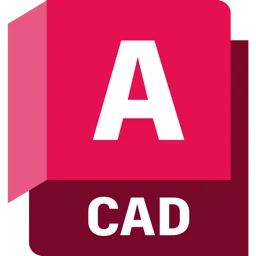Download Autodesk VRED Professional 2024
what is new in Autodesk VRED 2024
Transparency Modes
We added Depth Peeling for order-independent transparency and per-pixel correct blending of transparent surfaces, without sorting. Render images with complex intersecting transparent objects, such as a headlight, with pixel-perfect accuracy. Under Visualization > Advanced OpenGL Settings > Transparency Mode > Depth Peeling you can toggle between Object Sorting (using the Sort Key of the material) and Depth Peeling. Use the Transparency Settings in Visualization > Advanced OpenGL Settings > Transparency Mode to set the depth of the peeling.
Camera Editor Decoupling
The decoupling of the Camera Editor is complete, making it possible to access all properties via the Python API. Menus and quick access icons have been added, making it easier to locate options and access frequently used tools. Use the search, filtering, and collapse/expand controls to locate cameras and viewpoints in the Tree List. Split the Tree List into two views for easier sorting/grouping. Improved the loading and saving of tracks and viewpoints. Also, when working with tracks, the number of tracks selected in the Tree List determines the number of tracks displayed in the Track View. And lastly, properties can now be changed on multi-selection for cameras and viewpoints.
Face-normal Rendering
Improved face-normal rendering, by adding two new colors to show invalid normals. These help you detect files that are broken and can only be repaired by recalculating the normals. Red normals are NaN or have a zero length, which creates NaNs when normalized. Pink normals have an absolute angle between the face and vertex normal above a threshold, such as 85°. Invalid Normals Valid Normals
Roughness for Clearcoat
Added a Roughness option to the Metallic Carpaint Clearcoat section for imitating clearcoat spray paint high-gloss satin and matte finishes in OpenGL, CPU raytracing, and GPU raytracing. Now, you can control the roughness, thickness, and density of the clearcoat for most materials, such as Plastic, Brushed Metal, Metallic Carpaint, and Carbon (2D/3D).
Denoiser Improvements
We added the choice of NVIDIA’s OptiX GPU or Intel’s Open Image CPU denoiser when rendering and for lightmap baking. Set this in the UI or with Python. Use setDenoiserModel for switching to the AOV OptiX Denoiser, instead of using the default HDR OptiX Denoiser for raytracing. It is possible to combine GPU raytracing with CPU denoising and vice-versa. Therefore, CPU raytracing with CPU denoising is now possible, if you don’t have compatible RTX GPUs.
Disable Shadow Map Updates
We added setShadowMapUpdates(bool) and getShadowMapUpdates(). To prevent any shadow maps from updating, use setShadowMapUpdates(false). Lights created while the update is set to false will also be included and their shadow maps will not update. Re-enabling updates will trigger a render, updating all shadow maps.
Resolved FBX Textures Paths
We added support to resolve textures paths from FBX that are absolute to relative. This enables you to load textures with the file, without the need for manually reloading each texture.
Improved Photometric Dialog
Added a checkbox and removed a button from the Enable Photometric Parameters dialog to make it easier to choose the correct option for activating/deactivating the photometric mode and, therefore, reduce rendering issues.
Help Changes
For Python, we renamed the Python API V1 commands in the TOC for easier searchability and added example links to classes that have Python example files. For logo text and projecting textures, we added the Working with Logos and Projecting Textures topic at the request of a user. There are simple instructions for mapping a logo onto a material, adjusting its placement, and adding a bump map. We’ve also included information on dragging and dropping a texture from outside of VRED directly onto geometry in VRED and creating a decal from there. Lastly, find links to additional information, including a video on Texture Projection Settings. For the Material Editor, find all common attributes now only in General Truelight Material Settings. Content unique to a specific material is found in that material, along with links to common attribute information.
For Windows users, 2023.2 requires an NVIDIA RTX driver v.511.65 or above.
For Linux users, 2023.2 requires an NVIDIA driver v.510.47.03 or above.
Download Autodesk VRED Professional 2024
Download Autodesk VRED Professional 2024
Download Autodesk VRED Professional 2023.3 + Assets 2023
Password extract file: 1soft.link OR 2020
install Autodesk VRED
Installation instructions: see file readme.txt



